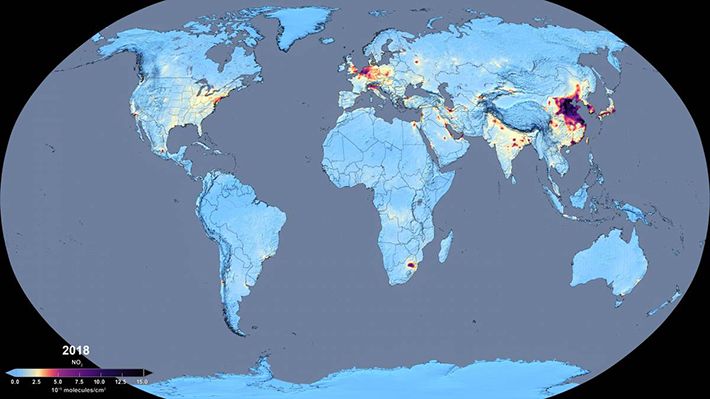Research Page
Revealing Complex Changes in Global Air Pollution
Exposure to outdoor air pollution is responsible for an estimated 4 million premature deaths annually with about another 3-4 million resulting from exposure to indoor air pollution; that is, air pollution is responsible for about 1 in 9 deaths worldwide. NASA satellites continue to reveal complex changes in these pollutants (e.g., ozone, nitrogen dioxide, and particulate matter) around the world, which are associated with changes in fossil fuel use, the effectiveness of emission controls, the distribution and frequency of wildfires, and the growth and contraction of country economies. Human activities are also causing an increase in climate gases, such as methane and carbon dioxide, which are having a profound effect on Earth’s climate.
NASA atmospheric models use these observations to constrain trace gas emissions and their transport and transformation in the atmosphere to 1) understand their impact on air pollution and climate change and 2) aid policy makers in the design of mitigation strategies. NASA observations taken with instruments on the ground, ships, and airplanes act to fill some temporal gaps in satellite coverage, providing detail unobtainable from space and information on critical atmospheric processes that further improve atmospheric models.
NASA atmospheric models use these observations to constrain trace gas emissions and their transport and transformation in the atmosphere to 1) understand their impact on air pollution and climate change and 2) aid policy makers in the design of mitigation strategies. NASA observations taken with instruments on the ground, ships, and airplanes act to fill some temporal gaps in satellite coverage, providing detail unobtainable from space and information on critical atmospheric processes that further improve atmospheric models.

